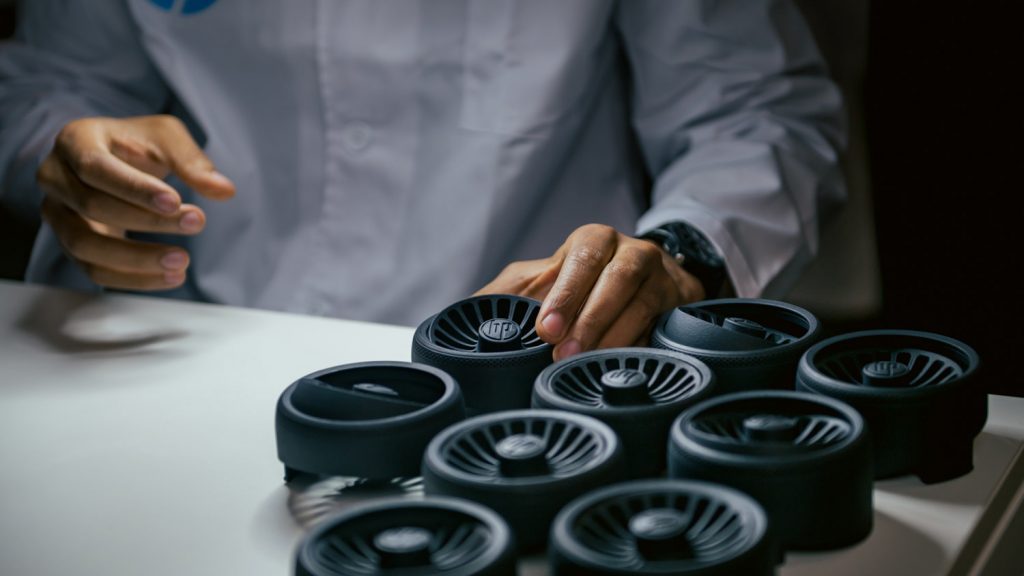Paul Benning, HP senior fellow & chief technologist, 3D Printing & Digital Manufacturing, HP Inc. gives DEVELOP3D his views on whether we’re set for a world of 3D manufacturing success, and how we need to better unlock the potential of additive manufacturing
3D printing technology, also known as additive manufacturing (AM), has long been associated with prototyping and hobbyists. But in recent years, thanks to an increased global demand for sustainable solutions, customised products and strategic supply chains, we are seeing 3D printing having a very real impact on a whole range of businesses, governments and individuals.
Innovation in the field has halved costs, while delivering twice the performance, so products that were previously considered to be implausible or impossible are now commonplace.
These include human tissue, prosthetics and implants tailored to a person’s unique anatomy, discontinued machinery parts and shoes that mould to foot shape and activity levels.
The force of this technology is undeniable, but the question as I see it is: How do we truly unlock its potential?
Closing the gap
The digitisation of supply and production processes is set to disrupt the $12 trillion global manufacturing industry, creating 133 million new roles.
However, what we’re seeing is that there simply aren’t enough skilled workers ready to fill the jobs our industry is creating.
As the 3D printing sector moves beyond prototyping, remarkable uses of this technology are set to appear. However, in order for that to happen, we must close this major skills gap.
How do we achieve this? By thinking outside the box and collaborating.
The way I see it, it’s a problem that demands both time and a concerted cross-industry commitment. The institutions that have the biggest impact on the future of 3D printing are our colleges and universities: for decades they’ve been critical in shaping the future of this industry.
It’s not uncommon to find heavy investment in 3D printers and the subject of innovation continues to generate much enthusiasm on campuses, even amongst professors who have been in the field for decades.
What excites them is the prospect of delving into new means of approaching design and manufacturing challenges, and today you will find many traditional colleges offering impactful design courses built around 3D printing technology.
However, in order to inspire and fully equip the next generation of innovators to flourish, there is now a need to expand university offerings. Currently, there are not enough programmes that deliver curriculums covering all the numerous disciplines within this vast technology, such as supply chain, industrial engineering, design, material science and manufacturing.
Simply knowing how to operate a machine is not enough to equip these students with the skills they need to thrive.
Universities and colleges have an obligation to follow a multidisciplinary approach that teaches them how to integrate the physics, software, materials and creative thinking around AM into a new product.
Developing new materials
In order to push 3D printing from prototyping to production, I think the industry must also look to broaden the range of 3D materials and reduce its cost to manufacturers. And vendors cannot be expected to do this alone.
There is great demand for a network of students, industry leaders, entrepreneurs and academics, all working in partnership to deliver the next generation of low cost, high-performance polymer powders, in a supply chain that is highly reliable and efficient.
Certainly, there are existing supply chains built for analog manufacturing that have been or can be adapted for 3D printing, such as stainless steel, gold, silver and titanium.
Modern approaches to 3D printing also create the potential to produce entirely new digital materials by changing the base on a voxel-by-voxel basis.
It is amazing to consider that we are living through the dawn in this new era of materials science.
Cutting edge innovation
3D printing materials market is expected to grow to nearly $6 billion by 2026, with some companies already leading the charge in getting budding innovators involved along the way.
In Corvallis, Oregon, HP, has an open platform materials and application lab dedicated to the development, testing, certification and delivery of new materials.
The new wave of cutting-edge 3D printing design processes also presents a whole host of opportunities for innovation and investment. In fact, as we speak, 3D printing is being used around the world to print parts for much needed items like face masks and ventilators, as we continue to battle COVID-19.
This year, HP established a new 3D Printing and Digital Manufacturing Center of Excellence in Barcelona, Spain. The 150,000-square-foot facility was designed to unite hundreds of 3D printing and digital manufacturing experts, with a focus on optimising and integrating AM production processes. And as part of a joint HP-NTU Digital Manufacturing Corporate Lab, HP has also collaborated with over 50 researchers in opening a new on-campus lab at Nanyang Technological University, Singapore.
The lab will assist in driving industry toward digital manufacturing and 3D printing technologies.
As we move into a fresh decade, I’m excited to think that we now have both the means and momentum necessary to drive 3D printing into a new era, one where it is a widely used and indispensable production tool.
But industry collaboration, between business leaders, academia and the scientific world, will be key, with all needing to take risks and pursue opportunities as they arise. If they do, we will see 3D printing finally being credited with the potential we know it presents.
 Paul Benning is an HP Senior Fellow and the Chief Technologist for HP’s 3D Printing & Digital Manufacturing business.
Paul Benning is an HP Senior Fellow and the Chief Technologist for HP’s 3D Printing & Digital Manufacturing business.
Benning is focused on the development of HP’s 3D printing technologies and core microfluidics platform to drive new business opportunities.
Paul holds over 40 patents and trade secrets and has authored over 35 publications including a book chapter on MEMS technology and applications across topics ranging from microfluidics and 3D printing to Inkjet algorithms and quantum dot devices.






